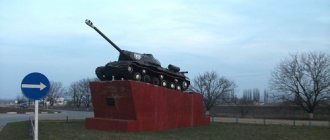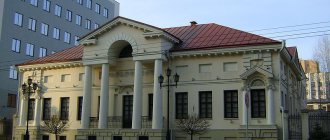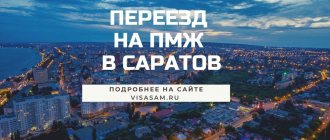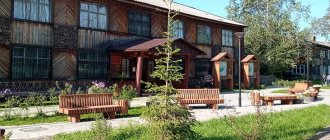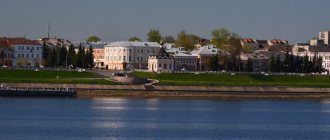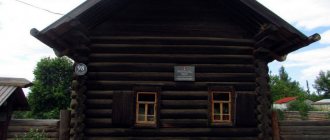Founded: 1590
Conservatory building in Saratov
Saratov
- Russian city, center of the Saratov region. It is located on the right bank of the Volgograd Reservoir, approximately equidistant from Volgograd and Samara.
Saratov founded
(2) July 12, 1590, on the day of remembrance of the position of the belt of the Most Pure Mother of God. It was founded as a guard fortress on the site of the city of Uvek. Uvek was the third largest city of the Golden Horde, but in 1395 it was destroyed.
In the winter of 1613, there was a fire in Saratov, the city was completely destroyed and rebuilt again on the left bank of the Volga. In 1670, Stepan Razin subjected the city to a three-day robbery. In the spring of 1674, by order of the Tsar, the city was moved to the right bank of the Volga River.
In 1708 he was under siege by Bulavin's troops. And in August 1774, Emelyan Pugachev’s army surrounded and took the city after a battle. But soon Saratov came under the control of government troops.
In 1780, the city became the center of the Saratov governorship, later renamed the Saratov province. A large number of Russian Germans settled in the city and in the surrounding area; the “Office of the Office of the Guardianship of Foreigners” opened in Saratov - a control center for German colonists in the Volga region.
Saratov is the unofficial capital of the Volga region. The rapid growth of industry and trade in the city began at the end of the 19th century, after the completion of the Tambov-Saratov railway. The road connected the city with Moscow and St. Petersburg.
Until the end of the 1920s, Saratov was the largest of the cities of the Volga region (larger than Kazan, Nizhny Novgorod, Samara) and was often unofficially referred to as the “capital of the Volga region.”
The city developed rapidly during the Great Patriotic War; factories and military schools were evacuated from the western USSR. Until 1990, Saratov was a closed city, as several large defense industry enterprises operated in the city.
By decree of the President of the Russian Federation dated July 2, 2022, Saratov was awarded the honorary title of Russian Federation for the significant contribution of city residents to achieving Victory in the Great Patriotic War of 1941–1945, ensuring uninterrupted production of military and civilian products at industrial enterprises, and for the massive labor heroism and dedication shown. Federation " City of Labor Valor"
».
The road bridge across the Volga connects Saratov and Engels
Modern Saratov is a well-known center of higher education in Russia. In addition to one of the oldest universities in Russia, SSU, there are more than ten different universities in the city. The city is famous for its mechanical engineering, oil and chemical industries.
Attractions
Saratov is considered: a road bridge connecting it with the satellite city of Engels; Lipki Park; Trinity Cathedral; Saratov State Conservatory named after. L. Sobinova; remains of the ancient city of Uvek, a major center of the Golden Horde.
Interesting
, which is near Saratov, 16 kilometers south of the city of Engels, is the landing site of the world's first cosmonaut Yu.A. Gagarin.
The city is home to more than 830 thousand people (2020).
Day of the city
in Saratov it is celebrated in September.
Border Fort
According to the generally accepted interpretation, it is believed that the founding date of Saratov is July 12, 1590. The city appeared as a fortress, which gradually developed into a serious fortification on the southeastern borders of Russia. From here the development and settlement of vast lands continued. The date of the founding of the city of Saratov coincided with the next round of development of trade along the Volga route.
The fortresses that were then built along the little-developed banks of the great river represented a powerful barrier against the raids of the Nogais and Crimean Tatars. Dangerous nomads forced the tsarist government to build Samara, Tsaritsyn and Saratov almost simultaneously. All these cities had one founding father - Grigory Osipovich Zasekin. A skilled fortifier, an experienced military leader and builder, he remained one of the main figures associated with consolidating Russian power on the Volga. 1590 (the year Saratov was founded) is a date that turned out to be an important milestone in this process. Thanks to the fortress, it was possible to establish a permanent connection between the lower and upper reaches of the Volga.
Coat of arms
The coat of arms of Saratov is presented in the form of a French shield. Three silver sterlets are depicted on an azure background, oriented from the upper corners of the shield and the middle of the tip. The fish are positioned with their heads towards the center. The bottom one is depicted with its back to the left of the viewer. They form the Greek letter "upsilon". Sterlets symbolize the abundance of these water inhabitants in this territory.
The artistic composition is included in the State Heraldic Register of the Russian Federation under No. 212. Adopted by decision of the Saratov City Duma No. 13-108 of November 18, 1997.
Features of the fortress
Zasekin determined not only what the founding date of Saratov would be, but also what the initial site for construction of the fortress would be. It was a convenient crossing on the Volga, located exactly halfway from Tsaritsyn to Samara. At first, about 300 archers served in the settlement. There was a hill near the town. It was used as a convenient platform for viewing the area several kilometers around.
The city was protected not only by fortifications, but also by natural barriers: steep river slopes, forests, oxbow lakes, channels and small lakes. On one side, the natural border of Saratov was a deep ravine. The city builders also tried. When the founding date of Saratov arrived, fortress walls and watchtowers appeared in the previously deserted area.
City of service people
The governor's office immediately became the heart of the new settlement. Next to it were the courtyards of archers, centurions and other military men. The rest of the city was occupied by the buildings of merchants and artisans. Service people (including gunners) lived close to the fortress walls, so that in case of an alarm they could immediately prepare for the defense of the city.
Separate from the other buildings were gunpowder magazines, grain barns and a prison. The tallest building was the church, which towered above the rest of the buildings. Saratov was mostly built of wood, which meant there was a constant danger of fire. For the safety of residents, pottery and metallurgical forges stood in a bare field. The successful date of the founding of Saratov and the natural conditions of the Lower Volga region allowed the city to grow quickly. There were vast untouched expanses of fertile land and abundant pastures. Rich hunting and hunting grounds also attracted more and more settlers.
Sary-tau?
In most cases, the name Saratov is deciphered as “Sary-tau” - yellow mountain, based on the assumption that this is the color of the clay of the often crumbling Sokolovaya Mountain or other yellow mountains in the cliffs that stretched along Pristannoye.
There is another option for the origin of the name. “Sary atav”, where the word “atav” is translated from Turkic as island. In documents from the late 16th – 17th centuries, Saratov was called an island, although the city had never been on an island. The fact is that in ancient times the word “island” could mean a tract, that is, any part of the area different from the rest: a forest in the middle of a field, a mountain, a rock or something else that was clearly visible from a distance and served as a landmark for nomads and those traveling along the Volga of people.
Population influx
In the history of Russian colonization of the Volga region, the date of the founding of the city of Saratov became an important mark, after which the influx of settlers into the region increased significantly. Service people went to the steppe for new prospects and a decent salary. The archers accompanied merchant ships and caravans, fighting not only with the Nogai nomads, but also with gangs of “thieving” Cossacks who robbed merchants.
The founder of the city, Grigory Zasekin, was appointed its first governor. He was in charge of all city life and was responsible for paying the archers salaries. On days off from military work, they were engaged in gardening, arable farming and raising livestock. The next wave of people who wanted to settle in Saratov appeared at the beginning of the 17th century, when the Russian state experienced a bloody Civil War and Polish intervention.
Cosmonauts Embankment
Tourists who come to this city in their reviews talk with pleasure about walks along the Cosmonauts embankment, which is one and a half kilometers long. It stretches from the road bridge to Volskaya Street.
The issue of building an embankment in the city was raised at the beginning of the 20th century. Previously, this place was occupied by piers and city backyards. However, under the tsarist regime, money was never found for such a costly project.
During Soviet times, the project was returned to several times, but work actually began only in 1947. They were carried out using the method of popular construction, when each of the city districts received a certain plot. The result was an embankment made in four tiers.
Its official opening took place in 1962, and it received its name in honor of the significant landing of Yuri Gagarin near Saratov a year earlier.
During the Time of Troubles
Against the backdrop of the horrors of the war, village residents and peasants fled from the chaos of the central provinces to the Volga region. The date of formation of Saratov is 1590, but it was 20 years later that it grew into a real city due to forced migrants. At the same time, the Volga fortress had to endure long-term oppression of the local Cossacks, who were commanded by all sorts of impostors (for example, Ileika Muromets and Ilya Gorchakov).
In the summer of 1607, a new threat appeared. A certain Tsarevich Ivan August gathered a Cossack detachment, captured Tsaritsyn and moved up the Volga. The Saratov garrison was then commanded by Vladimir Anichkov and Zamyatiya Saburov. The defenders of the fortress repulsed all the attacks of the gang and did not allow them to enter the city.
Saratov Bridge
The automobile bridge across the Volgograd Reservoir is a must-see in Saratov. It connects the right bank of the city of Saratov with the left bank of the Engels.
The bridge project was developed during the Soviet Union, and its grand opening took place in the summer of 1965. Soon, an intercity trolleybus line was even launched along it, which connected Saratov with Engels. In fact, it worked until 2004, until several pillars that supported the contact network fell. After examining the bridge, experts came to the conclusion that its structures are in disrepair.
A major reconstruction has now been completed. However, after this, the bridge will only work for 20 years, after which it will be demolished or converted into a pedestrian bridge, so if you have not yet seen this miracle of Saratov engineering, then you should hurry up.
New challenges
The imaginary Tsarevich Ivan fled to the Don, where he died in a skirmish with the army of False Dmitry II. Saratov also briefly ceased to obey the Moscow authorities - supporters of the next impostor seized power there.
Peace soon came, but in 1614 the settlement was overtaken by a real disaster. The city burned to the ground. Many residents died, and those who managed to survive moved to Samara. Gradually the fortress was restored. Its revival coincided with the restoration of legitimate power in Moscow (the throne passed to the Romanov dynasty).
The Volga region, meanwhile, continued to live its provincial life, divorced from great political passions. The main event here was the construction of new fortresses (for example, the founding date of Saratov became fundamental for the region). The history of the region in the 17th century is known rather fragmentarily. In 1636, Saratov was visited by Adam Olearius, the head of the German embassy, who left unique notes about the life of Russia at that time.
Settlement growth
In 1674, under Alexei Mikhailovich, the Saratov fortress was moved to a new location not far from Sokolovaya Mountain. Peter I visited here during the Persian campaign. The founding of Saratov was long gone. Now the city has been steadily growing and developing. Travelers noted its straight streets and rich shopping arcades. Saratov became a center of pottery, manufacturing, bread growing, and salt making. The pride of the local residents was the factory that produced taffeta, satin and stockings. In 1774, the city was attacked by a detachment of Emelyan Pugachev. His rebellion was already on its last legs. Ataman was arrested that same fall near Saratov.
The growth of the city and surrounding villages was facilitated by landowners, ruling circles and merchants. New residents also appeared spontaneously. Such settlers were serfs who fled from the landowners. Many villages arose around monasteries (for example, the future Khvalynsk). In the middle of the 18th century, more than 200 thousand people already lived in the Saratov region. During this period, new settlements were built in the city for workers involved in salt production on Lake Elton.
How Saratov developed
Saratov was founded in early July 1590 as a guard fortress to protect the southern borders of the Russian state. The fact is that after the campaigns of Russian troops against the Kazan Khanate and the Astrakhan Khanate, the Russian kingdom received vast territories of the Volga region. It was decided to build new fortified cities on the Volga. In the summer of 1586, the Samara fortress was founded, and in the summer of 1589, Tsaritsyn ( now Volgograd)
). Saratov was founded by Prince Grigory Zasekin and boyar Fyodor Turov, halfway between Samara and Tsaritsyn.
Today we remember the main milestones in the history of Saratov - a major cultural, economic and educational center of the Volga region.
The exact location of the original Saratov is unknown. The city was founded by Russian governors three times: in 1590, 1617 and 1674, and each time in a new place. To the south of the mountain, which is now called Sokolovaya, Colonel Alexander Shel laid the foundation for the third city building in a new location in 1674. Sokolovaya Gora is still a popular place from where you can see the entire city center.
There are several hypotheses about the name of Saratov, but there is no generally accepted one at the moment. One hypothesis suggests that Saratov got its name from Sokolova Mountain, in Tatar “sary tau” - “yellow mountain”. There is also an assumption that the name of the city comes from the words “sar atav” - “low-lying island” or “saryk atov” - “hawk island”. There is also an assumption that Saratov got its name from the Scythian-Iranian hydronym “sarat”. There are also many hypotheses.
According to the Regional Reform of 1708 by Peter I, Saratov was assigned to the Kazan province. After 10 years, the city went to the Astrakhan province, after another 10 years - again to the Kazan province, and in 1739 - again to the Astrakhan province.
The establishment of the “salt administration” in 1747 gave a strong impetus to the development of the city. Opposite Saratov, Pokrovskaya Sloboda is founded by Ukrainians carrying salt from Elton. Its location at the intersection of the shortest land route to Moscow and the water route from the lower reaches of the Volga and Caspian Sea makes Saratov an important transshipment point, a major center for trade in fish and salt. Thus, in 1750, 3,264 tons of fish were sent from Saratov by cart (in 2005, 1,800 tons were harvested).
On January 11, 1780, the city became the center of the Saratov governorship, renamed in 1796 into the Saratov province.
The basis for the development of the city for more than a hundred years was the General Plan of Saratov, approved in 1812. Regular geometric blocks were planned, the so-called regular development, and in the old part of the city it was also proposed to “regulate” the construction of houses.
The Patriotic War of 1812 made its own adjustments to the life of Saratov. Many Saratov soldiers were awarded military orders, and three received golden swords with the inscription “For bravery.” In 1813, French prisoners were exiled here and used for public works - they leveled ravines, built dams, and planted gardens. Subsequently, many of them accepted Russian citizenship and remained forever in Saratov, settling in the quarters of the German settlement.
In 1828, the Saratov tobacco factory, one of the first in Russia, began operating in Saratov. In addition to it, there were rope factories, leather factories, bell factories, brick factories and a number of other factories. Weaving workshops produced the famous cheap fabric - sarpinka, the “homeland” of which was Saratov.
The further growth of crafts and trade was stimulated by the development of shipping on the Volga.
Saratov residents saw the first steamship in 1820, dubbing it “a damn bark with a stove.” But shipping began to actively develop by the middle of the 19th century; large shipping companies began to appear in the Volga basin.
The Volga, which turned into the main transport route of Russia, made Saratov a major port. The number of city residents grew, and the appearance of the city changed; according to reviews of contemporaries, among other cities, “Saratov began to occupy one of the first places in terms of the beauty of buildings and the wealth of its inhabitants.”
The strongest impetus to the development of the Saratov province was given by the construction in July 1871 of the Tambov-Saratov railway, which connected the city with the country's railway network; Saratov was connected by railway with Moscow, St. Petersburg and the ports of the Baltic Sea. By the beginning of the 20th century, it was possible to travel by rail from Saratov to 11 provinces of Russia. Rapid growth of industry began.
In 1908, a tram appeared in Saratov. Saratov tram system, one of the oldest tram systems in Russia. Construction of the tram in Saratov began in August 1907. By this time, a horse tram had been operating in Saratov for 20 years. On October 1, 1908, a test tram ran along Ilyinskaya Street. On December 11, 1908, regular tram service began.
Patrons make a significant contribution to the economic and cultural life of the province. There were enough people in Saratov who loved their hometown very much and spared no effort and money for the prosperity of their region.
Among the first benefactors of the Saratov region were large landowners: princes S. F. Golitsyn and A. B. Kurakin, V. A. Volsky and K. V. Zlobin, A. P. Sapozhnikov, Saratov merchant M. A. Ustinov.
Lenin leads a meeting of the Council of People's Commissars, at which the decree “On the German colonies of the Volga region” was discussed.
Thanks to the manifesto of Catherine II of July 22, 1763, Saratov for a long time was the “center of gravity” of the Volga Germans, who numbered about 800 thousand at the beginning of the 20th century. After 1917, they received territorial autonomy - the Autonomous Soviet Socialist Republic of the Volga Germans. On October 19, 1918, by decree of the Council of People's Commissars of the RSFSR, the first autonomous region in the RSFSR was formed from part of the territories of the Saratov and Samara provinces - the autonomous region of the Volga Germans.
Volga Germans leave for Germany under the care of Red Cross workers.
December 2, 1929, Swinemünde
Collectivization in the German countryside had dire consequences. According to historians, thousands of the most productive peasant farms were destroyed, while their owners were shot, arrested, imprisoned, exiled, or, at best, became state farm laborers in “kulak” special settlements.
As relations between the USSR and Germany worsened, the attitude towards Soviet Germans also worsened. According to the order of the People's Commissar of Internal Affairs of the USSR No. 00439 dated July 25, 1937, all Germans who worked at defense industry enterprises (or with defense workshops) were to be arrested. On July 30, arrests and dismissals began, and in the fall of 1937, a massive operation began. In 1941, Volga Germans were deported to Siberia and Kazakhstan.
The deportation of Germans to the USSR led to the decline of the national language and culture, to accelerated assimilation with the rest of the population of the USSR. Since the late 1980s, some ethnic Germans have returned to the city of Engels in small numbers, but many more have emigrated to Germany.
The rapid development of Saratov was noted during the Great Patriotic War, when a number of factories and military schools were evacuated here from the west of the USSR. Until 1990, Saratov was a closed city (foreigners were not allowed to visit it), since several large defense industry enterprises operated in the city, in particular, the Saratov Aviation Plant, which produced military and civil aircraft. Many industrial enterprises in Saratov also carried out orders for the Soviet space program.
Modern Saratov
In 2011, in the general ranking of the attractiveness of cities compiled by the Russian Union of Engineers, Saratov took 20th place out of 164 cities. Population dynamics, transport infrastructure, natural and environmental potential, housing affordability, innovative activity, citizens’ well-being and other parameters were taken into account.
Stolypin Square.
On the left is the Saratov City Hall, in the center is the monument to P.A. Stolypin , on the right is the Saratov Regional Duma.
According to Forbes, in 2013 Saratov ranked 10th in terms of attractiveness for business out of 30 cities. According to the results of this year’s rating, Saratov surpassed Moscow, Nizhny Novgorod, St. Petersburg and Yekaterinburg in terms of financial attractiveness.
Center of the province
Perhaps Saratov today would not be such a large settlement if Catherine II had not signed a decree on the resettlement of schismatics to the local region. The Old Believers founded many settlements, including Balakovo and Pugachev. The growth of Saratov occurred in a southwestern direction, where new residential areas appeared. In 1803, the first theater appeared in the city. During the era of Catherine II, the provincial center was flooded with German colonists.
In 1782, the Saratov province was formed. Until 1850 it remained one of the largest in all of Russia. People from the central districts, where there was a shortage of land, flocked to Saratov and its environs. In addition to Russians and colonists from Germany, Ukrainians, Mordovians, and Tatars settled in the region. According to the 1897 census, 2.5 million people lived in the Saratov province, and on the eve of the First World War this figure exceeded 3 million. Growth stopped only because of the bloodshed and subsequent turmoil. The population of Saratov itself was 242 thousand people. It was the largest city in the entire Volga region (larger than Kazan, Astrakhan, Samara and Nizhny Novgorod).
City information
Saratov is the administrative center of the region of the same name in the Russian Federation. Located on the banks of the Volga River. The economy is represented by enterprises in the machine-building, petrochemical, instrument-making, and food industries. There are trading companies and service industries.
Important highways pass near the settlement: M5 Ural, M6 Caspian, P228, P208 and a number of others. The lines of the Volga Railway run through. An international civil airport is located. There are vocational educational institutions, universities and their branches. The population is about 850 thousand people.
Saratov and Stolypin
Many sights of Saratov and the surrounding area are associated with Pyotr Stolypin (1862-1911), probably its most famous native. The famous statesman of the era of Nicholas II served as Prime Minister of Russia for several years. He was the main initiator of reforms during the existence of the Tsar's Duma. His path to big politics began in his native Saratov - in 1903 he was appointed governor of Saratov. In 1906, he became Minister of the Interior and left the city, where after that he visited only on short visits.
Stolypin died after being shot in a Kiev theater. The chair on which he sat after the fatal bullet hit is exhibited in the Saratov Museum of Local Lore. Also in the city is a portrait of the Prime Minister, painted by the great Russian artist Ilya Repin. In 2002, the first monument to Stolypin in modern Russia appeared in Saratov.
Saratov accordion
Here we will present a photo with a description of a Saratov landmark, which can safely be considered one of the most unusual and amazing in the entire city. Moreover, it appeared relatively recently. A new monument to the Saratov accordion on Kirov Avenue appeared thanks to the sculptor Vladimir Palmin.
An accordion with bells is an ancient symbol of the city, which is now installed in the very center. Here's what to see in Saratov in one day.
The main character of the composition is a simple man who sits on a bench under a lantern and plays the harmonica. Anyone can sit next to him, reflect and take a photo. The height of the monument is almost three and a half meters, and its weight is 750 kg. The symbol of the city is immortalized in bronze.
Soviet industrialization
Due to the First World War and the Civil War, Saratov's economy was significantly degraded. Only after more than ten years had passed did production reach the previously record level of 1913. In the 30s the city experienced industrialization and collectivization. The transformations of that period greatly influenced what Saratov is today.
Photos of many modern enterprises are images of factories founded during forced industrialization. These include "Universal" - a plant engaged in the production of machine tools, as well as a knitting factory, a boiler plant, a meat processing plant, etc. Thanks to industrialization, the structure of Saratov's industry has changed. Metalworking played an increasingly important role in it, and the food industry played a lesser role.
Temple in honor of the Icon of the Mother of God “Quench My Sorrow”
This is a landmark of Saratov (photos with descriptions are given in the article), which should be seen by everyone who is interested in Orthodoxy.
The church was built in 1906 according to the design of the architect Pyotr Zybin. According to a legend that has survived to this day, the temple icon was commissioned from the holy Mount Athos by Bishop Hermogenes; it is an exact copy of the miraculous Athonite prototype. The official name of the icon is “Consolation in Sorrows and Sorrows”; people called it “Quench My Sorrow.”
During Soviet times there was a planetarium here, but the church was not used for its intended purpose. In the 60s, the crosses were even removed from it. The temple was returned to the diocese in 1990. Today, a large-scale restoration has been completed, a new iconostasis has been installed, and finishing work has been carried out in the altar area.
The church has one of the best and largest parish libraries in the entire diocese. The Sunday school, pilgrimage service, and Orthodox youth society are also involved in educational work.
The Great Patriotic War
During the Great Patriotic War, many enterprises from the front-line regions were evacuated to the relatively safe Saratov. Photos and reviews of tourists visiting the city today characterize it as a center of modern production, but a significant part of this economic capital was laid precisely in 1941-1945. The rubber, textile and light industries of local industry received additional development.
The Bryansk Machine-Building Plant, which in the future became a trolleybus plant, was evacuated to the satellite city of Saratov, Engels, located on the opposite, left bank of the Volga. Completely new production facilities have also appeared. Thus, gas production was established near Saratov, which was supplied to the city through a specially built gas pipeline. Most of the enterprises were reorganized to meet the needs of the front, which is why the share of mechanical engineering in the city economy increased.
Lipki Park
This is one of the oldest parks in the city. This is where you should definitely take a walk in Saratov! In 1824, it was decided to plant a garden around the Alexander Nevsky Cathedral, built after the Russian victory in the Patriotic War of 1812. That same summer, 1,080 linden trees were planted.
Initially, the park was named Aleksandrovsky Boulevard, then it was renamed City, and has been known under its current name since 1876. Soon a greenhouse appeared here in which echeveria and agaves were grown.
Currently, Lipki Park remains in demand among citizens and tourists. About a thousand trees and more than three hundred shrubs grow here. The park was often mentioned by Russian writers, for example, Konstantin Fedin.
Recent decades
In the 1950s Several large chemical industry enterprises appeared in Saratov and surrounding cities. The fuel and energy complex was developing, including the gas, shale, oil and thermal power industries. The city attracted more and more highly qualified scientific and technical specialists.
Among other things, instrumentation, mechanical engineering and electronics production plants were updated. At the same time, the regional center became one of the fronts for raising virgin soil in the steppe regions of the RSFSR and Kazakhstan.
In the 1970s In the Saratov region, the reclamation complex was born and rapidly developed. Irrigation canals and systems, as well as other related infrastructure, were built. Today Saratov remains one of the largest cities in the Volga region. Together with its satellite city Engels, it forms an agglomeration with a population of one million people.
